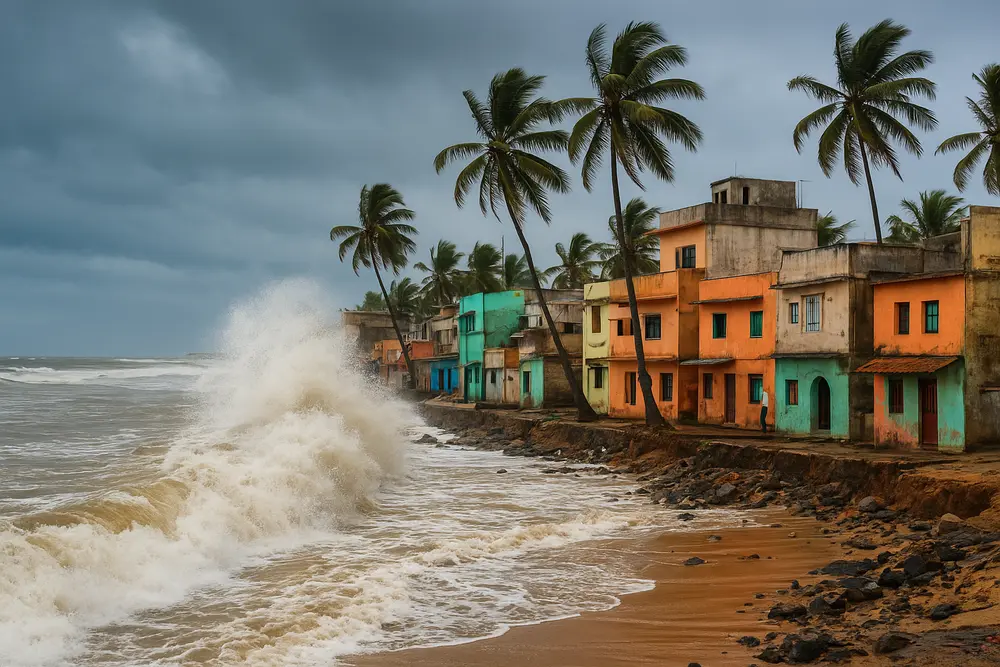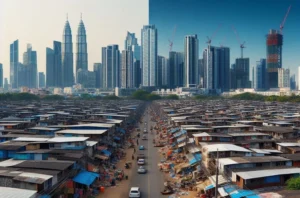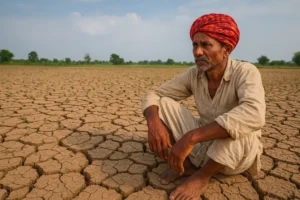Indian coastal communities are living on the frontline of climate change. Rising seas, stronger cyclones, and salty farmlands are reshaping lives in ways many of us can’t imagine.
From fishermen sailing farther into risky waters, to farmers watching their crops fail, to families losing homes to floods—this is the everyday reality in 2025.
Let’s explore how climate change is impacting millions along India’s vast coastline, the struggles they face, and the inspiring ways they are fighting back. Join us to understand their story—it’s not just about survival, it’s about resilience.

What are the Effects of Climate Change on Indian Coastal Communities in 2025?
Climate change is leaving a visible mark on India’s coastal communities, where millions of people are facing daily struggles against rising seas, stronger cyclones, and changing weather patterns.
With nearly 260 million people living within 50 km of the Indian coastline, these regions are some of the most vulnerable in the world.
From rising seas and stronger cyclones to salinity in farmland and loss of fish stocks, the effects are being felt across lives, livelihoods, and ecosystems.
Coastal communities are at the frontline of the climate crisis, struggling to adapt while trying to preserve their homes, culture, and traditions.
In this article, we will explore in detail how climate change is affecting India’s coasts, the challenges communities face, and the steps being taken to secure their future.
India’s Coastal Geography and Its Significance
India’s coastline stretches for about 7,500 kilometers, covering nine states and two union territories. These include West Bengal, Odisha, Andhra Pradesh, Tamil Nadu, Kerala, Karnataka, Goa, Maharashtra, and Gujarat, along with the Andaman & Nicobar Islands and Lakshadweep.
India’s ~7,500 km coastline is challenged by sea-level rise impacting both urban centers and rural communities. Since 1880, sea levels have risen ~20 cm globally, with projections up to 1.2 m by century’s end.
The coastline is not just about geography—it is the lifeline of millions of Indians. It supports:
- Fishing communities that depend on the sea for income and food.
- Agriculture, especially rice and coconut cultivation in low-lying deltas.
- Ports and trade hubs, such as Mumbai, Chennai, and Kochi.
- Tourism industries in Goa, Kerala, and Andaman.
- Rich biodiversity, including mangroves in the Sundarbans and coral reefs in Lakshadweep.
But this prosperity is under threat as climate change reshapes the very landscape of coastal India.
The State of Climate Change in 2025
By 2025, scientific evidence is clear: India’s coasts are warming and becoming more vulnerable. Some key findings include:
- Sea-level rise: Global sea levels are rising at about 3.7 mm per year, and parts of India’s east coast are experiencing even faster rise due to land subsidence.
- Cyclones: According to the India Meteorological Department (IMD), the frequency and intensity of cyclones in the Bay of Bengal and Arabian Sea have increased in the past two decades.
- Temperature changes: Average surface temperature in India has already risen by about 0.7°C since the 1900s, with coastal regions experiencing hotter summers and unpredictable rainfall.
- Changing monsoon patterns: The Indian monsoon is becoming erratic, causing both flooding and drought in coastal areas.
These changes are not abstract—they are reshaping the way people live and work along India’s shores.
Major Effects of Climate Change on Indian Coastal Communities
Climate change is reshaping India’s coastlines, bringing rising seas, stronger cyclones, and vanishing livelihoods. These effects touch every aspect of life, from farming and fishing to health and biodiversity.
Rising Sea Levels and Coastal Flooding
Sea-level rise is one of the most direct threats. In cities like Mumbai, Chennai, and Kolkata, frequent tidal flooding has become a norm. Low-lying areas in the Sundarbans delta and Kerala backwaters face the risk of permanent submergence. Families are forced to move inland, leading to displacement and loss of land ownership.
A study of Surat estimates that under high-emission scenarios (SSP5-8.5), by 2050 over 4 million people and assets worth ~$710 billion may be exposed to 100-year flood events due to sea-level rise and urban inundation.
Cyclones and Extreme Weather
Cyclones have become stronger and more destructive. Recent examples like Cyclone Amphan (2020), Yaas (2021), and Tauktae (2021) showed the devastation that coastal storms can cause. By 2025, such storms are not just more intense but also occurring outside the usual cyclone seasons, making preparation difficult. The damage includes:
- Destruction of homes and schools.
- Huge financial losses in agriculture and fisheries.
- Long-term psychological trauma for survivors.
A National Institute of Disaster Management – NIDM study recommends reviving Odisha’s littoral zone—restoring mangroves, casuarina, neem, and jamun trees—to buffer against cyclones and support livelihoods. It also urges investment in fishing hubs, mechanized boats, and cold storage to reduce migration.
Saltwater Intrusion into Farmlands
As seawater moves inland, it contaminates both soil and groundwater. Farmers in Odisha, West Bengal, and Gujarat report that crops like rice and vegetables are failing due to salinity. Drinking water scarcity is also rising, forcing women and children to walk long distances for fresh water.
Impact on Livelihoods
- Fishing: Fish populations are shifting due to warming seas and changing currents. Fisherfolk must travel further offshore, increasing costs and risks.
- Farming: Crops fail due to soil salinity, floods, and irregular rainfall.
- Tourism: Beach erosion and coral bleaching in Goa and Lakshadweep reduce tourist attractions.
Impact on Health
Climate change brings a silent health crisis. Warmer temperatures and flooding spread waterborne diseases like cholera and diarrhea. Heatwaves put outdoor workers at risk of dehydration and heatstroke. Malnutrition is rising as fish stocks decline and crop yields fall.
Biodiversity Loss
There is the history of ecological threats like the 1998 coral bleaching in Lakshadweep, where over 70% of reefs were lost, and ongoing risks to mangroves and wetlands
- Mangroves in the Sundarbans are shrinking due to rising seas, removing natural barriers against cyclones.
- Coral reefs in Lakshadweep are bleaching, threatening marine life.
- Bird species in coastal wetlands are losing nesting sites.
Economic Consequences of Climate Change on Indian Coastal Communities
The economic impact of climate change on India’s coasts is massive and growing each year. Rising seas and stronger cyclones often damage homes, roads, and ports, disrupting trade and transport.
In cities like Mumbai and Chennai, frequent flooding means higher repair costs and losses for businesses.
For fishing communities, the challenge is even sharper. As fish move farther offshore, fuel costs increase while incomes shrink.
Agriculture suffers too, with saltwater intrusion ruining fertile land and reducing crop yields.
Tourism, a major source of revenue in Goa, Kerala, and the Andaman Islands, is also at risk as beaches erode and coral reefs bleach.
A 2025 World Bank report warns that, without action, India could face annual flood-related damages of USD 5 billion by 2030 and USD 30 billion by 2070. These losses would disproportionately impact low-income residents in coastal urban areas, deepening poverty and vulnerability.
The economic story of climate change is not just about numbers—it’s about struggling families, lost opportunities, and uncertain futures.
Government and Policy Response
The Indian government knows that climate change is hitting coastal areas the hardest, and several policies are already in motion.
At the national level, the National Action Plan on Climate Change (NAPCC) provides a framework for adaptation and renewable energy growth. Each coastal state has also prepared its own State Action Plan, focusing on local issues like cyclone management, water conservation, and sustainable farming.
Disaster preparedness has improved a lot in recent years. Early warning systems, cyclone shelters, and evacuation drills have saved thousands of lives compared to the devastating Odisha Super Cyclone of 1999. The Coastal Regulation Zone (CRZ) rules aim to balance development with ecosystem protection, although enforcement often remains a challenge.
The government is also pushing for climate-resilient infrastructure—from stronger sea walls to elevated housing in flood-prone regions.
On the international stage, India is advocating for climate finance and global cooperation, reminding the world that vulnerable communities need urgent support.
Still, gaps exist. Funding is limited, coordination between agencies can be slow, and many small villages feel left out. Stronger implementation and community involvement will be key for lasting results.
Community and Local Adaptation Measures
While government policies play a big role, it’s often the local communities who find the most creative ways to adapt.
In Odisha and West Bengal, for example, villagers are planting mangroves along coastlines. These trees act like natural shields, breaking the force of waves during storms and protecting farmlands from saltwater.
Farmers are also experimenting with salt-tolerant rice varieties, ensuring their harvests survive even when seawater seeps into the soil.
Fishing communities are adapting too. Since fish are moving farther offshore due to warming seas, NGOs are training fisherfolk in sustainable aquaculture and even helping them explore alternate incomes like crab farming or seaweed cultivation.
In Kerala, women’s self-help groups are taking the lead in disaster preparedness, managing early warning systems, and organizing relief supplies during cyclones.
These efforts may seem small, but they make a huge difference. They show that resilience is not just about big infrastructure projects—it’s also about local wisdom, community cooperation, and innovation.
By combining traditional knowledge with modern solutions, India’s coastal communities are proving that they can fight back against climate change, one step at a time.
Future Outlook: 2030 and Beyond
Looking ahead to 2030, the future of India’s coastal communities will depend on how quickly action is taken today.
Scientists warn that sea levels could rise by another 10–15 cm in the next decade, and for low-lying areas like the Sundarbans or Kerala backwaters, even a small rise means more frequent flooding.
Imagine waking up each year to see your farmland a little more salty, or your fishing boat traveling farther into the sea just to catch fewer fish. That’s the daily reality millions may face.
Major cities like Mumbai and Chennai could see chronic flooding, disrupting business, housing, and transport.
The Sundarbans may lose more islands, forcing families to permanently migrate inland.
Coral reefs in Lakshadweep, already under stress, could collapse completely, taking away both biodiversity and tourist income.
But it isn’t all bleak. If India scales up renewable energy, mangrove restoration, and climate-resilient farming, communities can adapt and thrive.
With global cooperation and local resilience, coastal India can turn the tide—literally.
The next decade is less about predicting disasters and more about choosing whether we act fast enough to prevent the worst.
Read Here: The Impact of Water Scarcity on Indian Farmers
Conclusion
The effects of climate change on India’s coastal communities in 2025 are profound and undeniable.
Rising seas, stronger cyclones, saltwater intrusion, and biodiversity loss are reshaping livelihoods and threatening survival. Yet, these communities are not passive victims—they are adapting, innovating, and resisting.
The challenge is enormous, but with the right mix of government action, community resilience, and global cooperation, India’s coastal regions can face the storm and emerge stronger.
Climate change is not just an environmental issue—it is a human story. And the story of India’s coastal communities is one of both struggle and strength, a reminder that the choices we make today will decide the shores of tomorrow.





